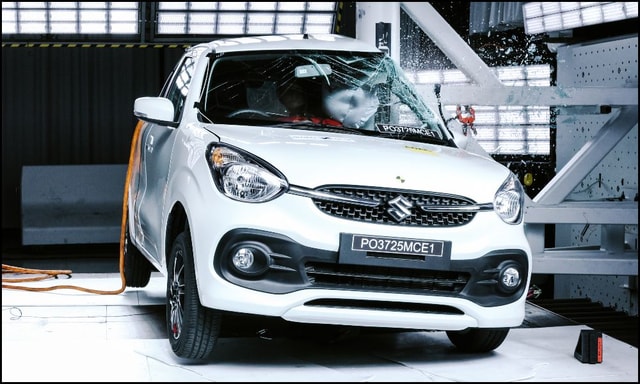How an Oil Pressure Gauge Works

- The gauge tells you about any problems in the engine in advance.
- The oil pressure gauge works as a monitor to check the oil pressure.
- The oil warning light has a sensor and provides indications.
The gauge tells you about any problems in the engine and gives you advanced notice, saving you from an expensive breakdown. If any, you can investigate the problem and save a lot of time, effort, and money.
How Does an Oil Pressure Gauge Work?
The oil pressure gauge works as a monitor, and its job is to see the oil pressure in the main oilways near the filter and the pump. The engine block has a tapping and either an oil pipe or a sensor screwed into it.

Photo Credit: www.mecatechnic.com
The oil warning light has a sensor and is screwed into the T-piece or the union. It doesn't matter if the car has a fitted oil pressure gauge or not.
The mechanical gauges work because the engine's pressure forces the needle into the dial. On the other hand, electrical gauges work with a sensor that produces variable resistance and is screwed into the engine block. This affects the circuit that has the sensor and the gauge through the current that passes through it.

A mechanical oil gauge
Mechanical oil gauges don't use wires but instead use pipes. Technicians believe that this not only creates a trustworthy reading compared to wires but also creates risks. Instead of using electrical currents to measure resistance, the mechanical gauge funnels oil into the small pipe simultaneously at the same pressure at which it flows in the engine. The oil pipe is placed in such a way that it is away from anything that could damage it, as it could lead to the spilling of oil if the pipe is damaged. Mechanical gauges require more attention and delicacy than electric gauges.

Photo Credit: www.vdo-gauges.com
Electric gauges
A fused power supply provides electric current to the gauge, and the current is supplied from printed tracks or one of the wires behind the dashboard. A wire-wound coil that is mounted within or around the needle's pivot passes the current and produces a magnetic field. This field is responsible for moving the needle across the gauge. The amount of current decides which reading to give and how far the scale goes. It depends on the gauge's return wire's resistance, which you will find is earthed to the engine block with the help of a sensor.
Oil pressure decides the sensor's resistance, and oil enters the sensor's end by pushing against a diaphragm screwed into the engine block.
The Difference
The electric gauges are easier to route and are less bulky. The electric gauges get easily integrated into the modern circuits that modern cars have.
Mechanical gauges are not so common compared to electric ones. The problem with a mechanical gauge is that it can get very messy if it gets damaged.
Trending News
 3 mins readWill The Kawasaki W230 Be Launched In India?
3 mins readWill The Kawasaki W230 Be Launched In India?
Latest News
 car&bike Team | Dec 23, 2025India Bike Week 2025 In Pictures: Highlights From Edition 12The 12th Edition of IBW was held on December 19 and 20, and if you missed this year’s festival, here is a recap of all that happened.3 mins read
car&bike Team | Dec 23, 2025India Bike Week 2025 In Pictures: Highlights From Edition 12The 12th Edition of IBW was held on December 19 and 20, and if you missed this year’s festival, here is a recap of all that happened.3 mins read Amaan Ahmed | Dec 23, 2025Tata To Enter Rs 40 Lakh Passenger Car Market With First Avinya Electric SUV In End-2026Set to be one of three EV launches from Tata Motors next year, the first in the Avinya series of electric vehicles will catapult the Pune-based carmaker into uncharted market territory, as it will be the most expensive Tata yet.1 min read
Amaan Ahmed | Dec 23, 2025Tata To Enter Rs 40 Lakh Passenger Car Market With First Avinya Electric SUV In End-2026Set to be one of three EV launches from Tata Motors next year, the first in the Avinya series of electric vehicles will catapult the Pune-based carmaker into uncharted market territory, as it will be the most expensive Tata yet.1 min read car&bike Team | Dec 23, 2025Will The Kawasaki W230 Be Launched In India?Kawasaki India has teased the W230 on its Instagram handle, indicating that the Kawasaki W230 may be in consideration for a launch in India.3 mins read
car&bike Team | Dec 23, 2025Will The Kawasaki W230 Be Launched In India?Kawasaki India has teased the W230 on its Instagram handle, indicating that the Kawasaki W230 may be in consideration for a launch in India.3 mins read Jaiveer Mehra | Dec 23, 2025Suzuki Fronx Secures One Star Safety Rating In ANCAP Crash Tests As Rear Seatbelt Fails During TestingThe Fronx scored less than 50 per cent points in both, adult and child occupant protection categories.1 min read
Jaiveer Mehra | Dec 23, 2025Suzuki Fronx Secures One Star Safety Rating In ANCAP Crash Tests As Rear Seatbelt Fails During TestingThe Fronx scored less than 50 per cent points in both, adult and child occupant protection categories.1 min read car&bike Team | Dec 23, 2025Final Jaguar F-Pace Rolls Of The Line: Production EndsThe Jaguar F-Pace marks the end of the brand’s internal combustion lineup, as the final model rolls off the line.2 mins read
car&bike Team | Dec 23, 2025Final Jaguar F-Pace Rolls Of The Line: Production EndsThe Jaguar F-Pace marks the end of the brand’s internal combustion lineup, as the final model rolls off the line.2 mins read car&bike Team | Dec 22, 2025Maruti Suzuki Celerio Secures Three-Star Rating In Global NCAP Crash TestsSix airbags-equipped model secured a three-star adult and two-star child occupant protection rating; the dual airbag model scored a two-star rating.3 mins read
car&bike Team | Dec 22, 2025Maruti Suzuki Celerio Secures Three-Star Rating In Global NCAP Crash TestsSix airbags-equipped model secured a three-star adult and two-star child occupant protection rating; the dual airbag model scored a two-star rating.3 mins read
 Seshan Vijayraghvan | Dec 23, 20252026 Kia Seltos Review: Formula Is Spot On, But Is The Timing Right?The 2nd-gen Kia Seltos has arrived, but it has the challenge of facing strong rivals like the Victoris and Sierra. The question is simple - Does it still have what it takes?9 mins read
Seshan Vijayraghvan | Dec 23, 20252026 Kia Seltos Review: Formula Is Spot On, But Is The Timing Right?The 2nd-gen Kia Seltos has arrived, but it has the challenge of facing strong rivals like the Victoris and Sierra. The question is simple - Does it still have what it takes?9 mins read Seshan Vijayraghvan | Dec 22, 20252026 Tata Harrier & Safari 1.5 Hyperion Review: By The Power Of Petrol!The new Tata Harrier and Safari petrol packs a new 1.5-litre TGDI Hyperion engine, but is it an ideal alternative to the diesel version?7 mins read
Seshan Vijayraghvan | Dec 22, 20252026 Tata Harrier & Safari 1.5 Hyperion Review: By The Power Of Petrol!The new Tata Harrier and Safari petrol packs a new 1.5-litre TGDI Hyperion engine, but is it an ideal alternative to the diesel version?7 mins read Bilal Firfiray | Dec 19, 2025Maruti Suzuki e-Vitara Review: Worth The Wait?After a long wait, the first-ever electric Maruti Suzuki is here. It’s the e-Vitara, and it comes with a few promises. But arriving this late, is it worth the wait? Or is it a case of too little, too late?9 mins read
Bilal Firfiray | Dec 19, 2025Maruti Suzuki e-Vitara Review: Worth The Wait?After a long wait, the first-ever electric Maruti Suzuki is here. It’s the e-Vitara, and it comes with a few promises. But arriving this late, is it worth the wait? Or is it a case of too little, too late?9 mins read Bilal Firfiray | Dec 18, 2025Mercedes-Benz G450d: The Subtle Power of EvolutionThe Mercedes-Benz G 450d evolves subtly with more power, improved efficiency, and modern tech, while staying true to the timeless G-Class design. And character.4 mins read
Bilal Firfiray | Dec 18, 2025Mercedes-Benz G450d: The Subtle Power of EvolutionThe Mercedes-Benz G 450d evolves subtly with more power, improved efficiency, and modern tech, while staying true to the timeless G-Class design. And character.4 mins read Janak Sorap | Dec 11, 2025Harley-Davidson X440 T First Ride Review: Smarter and SharperHarley-Davidson has taken the X440 and given it a more focused and engaging twist. The result is the X440 T—essentially the same platform but updated in areas that give the motorcycle more appeal and riders more thrill.5 mins read
Janak Sorap | Dec 11, 2025Harley-Davidson X440 T First Ride Review: Smarter and SharperHarley-Davidson has taken the X440 and given it a more focused and engaging twist. The result is the X440 T—essentially the same platform but updated in areas that give the motorcycle more appeal and riders more thrill.5 mins read






























































































































